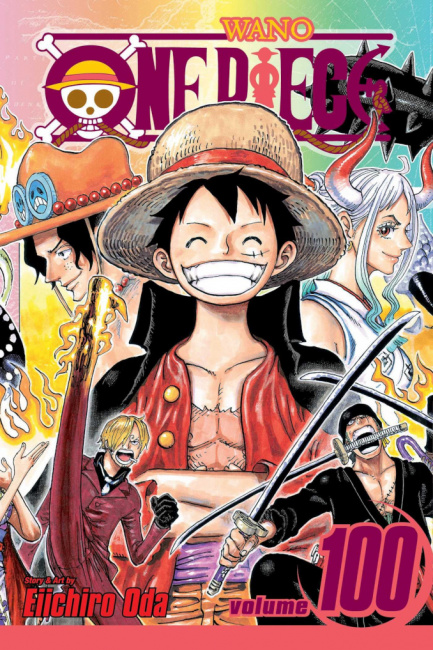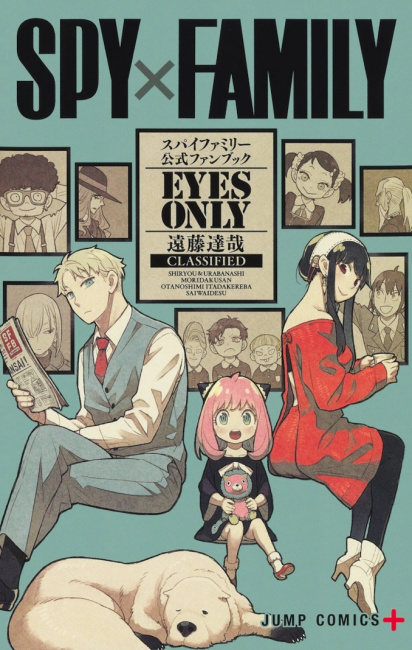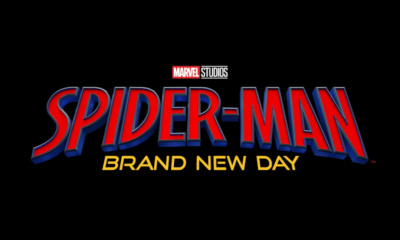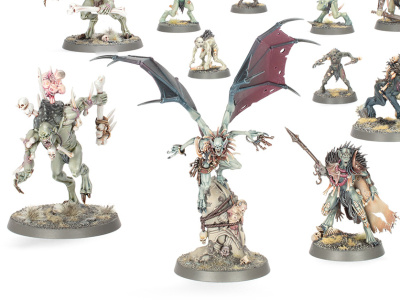We interviewed VIZ Media Vice President – Publishing Sales Kevin Hamric for ICv2 Manga Week, and got his views on manga sales trends, supply chains, retailer best practices, and more, and heard about Viz’s top Fall 2023 releases, including box sets and Star Wars: The Mandalorian Manga.
ICv2: When we talked at San Diego last year, you said that manga sales were still on the upswing (see "ICv2 Interview: Viz Media’s Kevin Hamric"). As you've probably seen, we heard through NPD that late last year and early this year, the book channel manga sales were starting to show lower numbers versus a year ago (see "Book Channel Graphic Novels Dropping"). Is that what you're seeing? Can you give us some perspective on how that compares to previous years?
Kevin Hamric: We had an excellent holiday, so our sales all the way through the end of the year were still quite high. We had another record year, a record holiday season. We didn't start seeing any type of a slowdown until probably the second or third week of January. We're still ahead of 2020, still ahead of 2021, and just a little bit below 2022.
And last year at this time, in 2022, we were still running around trying to print as many books as we could. Now, we're back in stock a little bit better than pre‑pandemic levels. Our fill rate is just as good as before COVID. It's just that we're printing a lot more books, and there's not that crazy mad dash to get everything on day one, because now, everyone knows we have the books.
You said sales are going down a little bit in 2023. What do you attribute that to?
It's a lot of things. People and the retailers are a little fearful of the economy. They're listening to all the news; they're being a little cautious. I also think that consumers are spending their money elsewhere. I've been traveling a lot lately and the planes are all full, the airports are full. People are out spending the money on everything else.
A lot of the demand for manga during COVID was driven by anime streaming. Is that still as high as it was a year ago?
I haven't seen anything recently and nothing for the end of the year, the fourth quarter of 2022, but talking to our anime division, they say things are still very good.
Just like manga in the retail space, anime in the streaming space has become a little bit saturated. There's going to be some leveling out there as well.
Are you seeing any differences in how sales are changing between your top sellers and the deeper backlist?
I would say the drop in sales has been across the board. Our classics, our deep backlist titles, the older books are still selling above pre‑pandemic levels, as are our new hits. During COVID, we brought a lot more new readers into the category, and they seem to be sticking with the series they started with.
Were there any differences between book channel and independent retailers, comic stores, or bookstores in how the manga trends played out over the last couple of years?
Comic book channel, Direct Market, and the independent book stores grew at a higher rate than online or chain.
There was a huge push on One Piece this year, and it seemed like a multicompany push. Bandai certainly was making a big splash at the summer shows with those huge figures. There was a takeover in Times Square during New York Comic Con. It's definitely finally breaking into mass consciousness a little bit. Where did that push originate? What were the companies involved? What are you seeing, in terms of the response?
It was Toei, the licenser and the company that made the movies and the anime, and then Bandai with all the consumer products, and then we have the manga. It all happened around volume 100, and then the movie, One Piece Film: Red came out and did quite well worldwide.
I did hear that worldwide, viewership is up on the anime. I'm seeing One Piece merchandise everywhere I go. Our sales have been incredibly increased since Vol. 100, and people are going back and starting the series. We've had to reprint all 104 volumes and all the three‑in‑one editions.
It is in the mass merchandisers now, and that contributes to the increase in sales. Even Indigo, and BAM!, and Barnes and Noble are all seeing increase in sales products. I don't know if it's generational, or if it's because of COVID people finally got into it, or all of that, but it's nice to see.
You mentioned that your supply chain has improved, with fill rates up to pre‑pandemic levels. When did that change? When we talked at San Diego, you were still running out of a lot of volumes.
We were. I would say just probably late October, early November is when I started feeling comfortable about everything again. Now, we're back to pre‑pandemic time frames in getting books reprinted.
I was shocked to see manga sections at mass retail last fall. I was curious, how have expanded displays in those outlets performed, and are they continuing?
They have performed above expectations. Both the major mass merchandise chains are going to continue with the sections; there's no talk about shrinking them at all. As a matter of fact, they're both talking about expanding them a little bit or bringing in special displays at different times of the year, including half pallets and pallet programs, end caps, four-way displays, things like that.
Back when Borders went out of business, the book industry lost that business. It didn't go someplace else. There are still, to this day, many areas in this country that don't have a bookstore chain, whether it's a Barnes & Noble or a Books-a-Million store. Some of them don't have a comic book shop or an independent bookstore. These mass merchandisers and their book departments are all they have in those local communities. That's why I've been trying, since I started at VIZ, to try to get manga into those sets. Now, thanks to COVID (silver lining), we were able to do this, and it's proven to be quite successful.
On the comic store side, a lot of retailers have expanded their sections. One of the two things they wrestle with are new releases and how to stock the new releases that come out. The other one is how to handle the longer series. They don’t have a dozen manga bays like some Barnes & Nobles, so they have to pick and choose. What do you see in terms of best practice for independent retailers and how to deal with that issue?
We've got two of our employees at ComicsPRO right now, and that's going to be part of the roundtable discussion with comic shops. I just got back from doing several visits to different countries and talking to comic shop owners and independent bookstore owners, and the space is the number one issue. And the fact that manga, as you know, it's quite a difficult category to get your head around, let alone your arms.
There is no one‑size‑fits‑all type of answer. It all depends on the store and the locale. We're here to help them. If an independent shop or a comic book shop owner wants hands‑on help, we are all but willing to talk to them and talk them through what might be working best. What works in the middle of Texas may not be the same thing that works in the middle of New Jersey. We've got a lot of data to say what type of books work in different parts of the country.
On a series that's more than a few volumes, we see some retailers stocking the first few volumes and the last few, and in between they'll do on special order. Is that strategy successful?
Yeah, that's usually what happens, and some stores will keep the first three, the middle three, and the last three. As the next volume comes out, they'll take the lowest volume in the middle, return that if there's any in stock. Or, take the third last one and return that and keep the very last volume, because nobody can stock 72 volumes of Naruto or 98 volumes of Case Closed or 104 volumes of One Piece.
As far as the new stuff goes, we will definitely let people know what we think are going to be the best sellers out of any season and what we're banking on. Our sales reps and Simon & Schuster have all that information as well, and they would give the same information to the accounts.
What are you looking forward to this year in terms of releases that retailers should be noticing and stocking as a good potential investment?
We just had our sales conference for our fall '23 lists. I've been here almost 12 years now and this is the strongest list we've ever had. It is absolutely jam‑packed with big titles, including continuing series. Prior to this call, I was looking through to the title list and I was like, "What am I going to tell ICv2?" It would be like trying to choose your favorite child.
All of our big series have continuing volumes: Komi Can't Communicate, Chainsaw Man, Jujutsu Kaisen, Kaiju No. 8, My Hero Academia, My Hero Academia ‑‑ Team‑Up Missions, One Piece, and Spy x Family all have new volumes coming out this fall.
We've got two books from Spy x Family coming that are not manga. The first one is called Spy x Family: Family Portrait. These are five one‑shot stories, five original prose stories that delve into the characters and the family that's the center of the manga.
The second one is Spy x Family:The Official Guide ‑‑ Eyes Only. This is a data book, the first official data book from the hit series. These include behind‑the‑scenes details covering the first nine volumes of the manga series. It also has 16 illustrations from artists like the manga-ka for Attack on Titan, for Hell's Paradise, and for Blue Exorcist. We're very bullish on that one.
Then, we've got Jujutsu Kaisen: The Official Guide: Anime Season 1. This is the authorized companion to the anime series that comes out in September. It's all the behind‑the‑scenes details from the animation production team.
We've got two new coloring books coming: Bleach: The Official Coloring Book and Naruto Shippuden: The Official Coloring Book.
We put Uzumaki and Demon Slayer coloring books into the mass merchandisers and they exploded, every week selling, selling, selling. I don't know if we've created another coloring book craze or not, but we're going to come out with these two this fall, and hopefully the success continues.
We've got JoJo's Bizarre Adventure Part Six, Stone Ocean. That next arc starts this fall.
We've got two new box sets this fall. The Promised Neverland complete box set, that's all 20 volumes in one box set. Then, Chainsaw Man box set for the first 11 volumes; that's what's considered in Japan as Part One. Volume 12 and 13 have been announced by us, so that will be Part Two.
We've got Full Metal Alchemist 20th Anniversary Book coming out in October. This is part fan book, and part commemorative tribute, and part short story collection. It's a unique type of book, but every Full Alchemist fan will want this.
From our VIZ Originals team, we've got Star Wars: The Mandalorian -- The Manga. This is the official manga adaptation of the critically acclaimed The Mandalorian series.
Nana, one of our older series from Shojo Beat, became a hit during COVID because of TikTok book talk. That series may never end, but a series that Ai Yazawa, the creator, did before Nana, Neighborhood Story, is a completed series. Four volumes only, but for the first time, it's coming out in English, and that will start in December.
I'll mention two more. We've got Tekkonkinkreet ‑‑ Black & White 30th Anniversary Edition. We've published this in the past from the Eisner Award‑winning author, Taiyo Matsumoto. This is going to be all‑in‑one volume, a very deluxe volume, very upscale production with 18 color pages and a full color foldout poster. We're going to put it back to right‑to‑left reading.
And then we have Mimi's Tales of Horror, our seasonal release from Junji Ito.
It’s a huge, huge list (see "VIZ 2023 Builds on Proven Performers" for more on some of these titles).
For more Manga Week coverage, click here.

Plus Top 2023 Releases, Including Box Sets, 'The Mandalorian' Manga, More
Posted by Milton Griepp on February 27, 2023 @ 1:57 am CT
MORE COMICS
Showbiz Round-Up
August 11, 2025
The summer heat is on, and Hollywood news is boiling over. Time for a round-up!
Column by Scott Thorne
August 11, 2025
This week, columnist Scott Thorne notes a new twist in the Diamond Comic Distributors saga and shares his thoughts on the Gen Con releases that will make the biggest impacts.
MORE NEWS
Crossover Card Battling Game
August 11, 2025
Ghost Galaxy will release a King of Tokyo expansion, for the Mindbug board game, into retail.
'Charnel Watch' and 'Cursed Shacklehorde'
August 11, 2025
Games Workshop will release two new Warhammer: Age of Sigmar - Spearhead sets.










